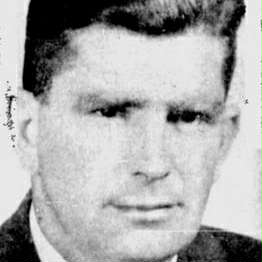
1915 - 1956
John Etter Clark
Summary
Name:
Years Active:
1956Birth:
March 29, 1915Status:
DeceasedClass:
Mass MurdererVictims:
6Method:
ShootingDeath:
June 03, 1956Nationality:
Canada
1915 - 1956
John Etter Clark
Summary: Mass Murderer
Name:
John Etter ClarkStatus:
DeceasedVictims:
6Method:
ShootingNationality:
CanadaBirth:
March 29, 1915Death:
June 03, 1956Years Active:
1956bio
John Etter Clark was born on March 29, 1915, in Stettler, Alberta, Canada. He came from a farming family and eventually inherited a large 1,000-acre (4.0 km²) farm originally established by his father. In addition to managing the farm, Clark worked as a part-time school teacher, suggesting a relatively stable and respectable life within his rural community. In 1947, he married Margaret Dinwoodie, and together they had four children.
Clark also pursued a career in politics. Representing the Social Credit Party, he entered public office in the 1952 Alberta general election, winning a seat in the Legislative Assembly of Alberta for the Stettler district. He successfully retained his seat in the 1955 general election, earning a comfortable majority against his opponents. He was seen as an active political figure, and his re-election affirmed his standing within both the party and his constituency.
However, behind the scenes, Clark struggled with significant mental health issues. He experienced a nervous breakdown in 1954 that required hospitalization for a month and a half. Another breakdown occurred during the spring session of the Alberta Legislature in 1956. Despite these challenges, he continued his legislative duties and was even expected to travel to Saskatchewan to support the Social Credit campaign in that province’s election on June 1, 1956.
murder story
On June 3, 1956, John Etter Clark committed one of the deadliest mass murders in Alberta’s history. That day, Pete Parrott, a neighboring farmer leasing land from Clark, arrived at Clark’s property near Erskine, Alberta, for a social visit. What he discovered was a horrific scene: the bodies of six people, each shot in the head with a .22 caliber rifle. A seventh victim was found wounded and transported to a local hospital, but succumbed to injuries shortly afterward.
The deceased were later identified as Clark’s wife, Margaret, their four children, a hired farmhand, and a visitor to the home. The murder weapon was a single-shot .22 caliber rifle that Clark had borrowed from his uncle. The victims had all been shot execution-style, some multiple times, with no survivors.
Clark himself was missing when the Royal Canadian Mounted Police arrived on the scene with a contingent of 14 special field agents. A large-scale manhunt ensued, involving 32 RCMP officers on horseback and tracking dogs, as well as aerial reconnaissance by a Royal Canadian Air Force Otter aircraft. Clark's body was discovered a few hours later, lying at the edge of a dugout approximately 550 meters (600 yards) from the farmhouse. He was dressed in nightclothes, suggesting he had prepared for bed prior to the murders. A single self-inflicted gunshot wound to the head and the presence of the murder weapon beside him confirmed his suicide.
The investigation uncovered that Clark had been under severe psychological distress in the months leading up to the massacre. His prior mental health breakdowns and apparent lack of stability may have contributed to his eventual actions. The motive for the killings was never officially established, and Clark left no known note or message explaining the event.